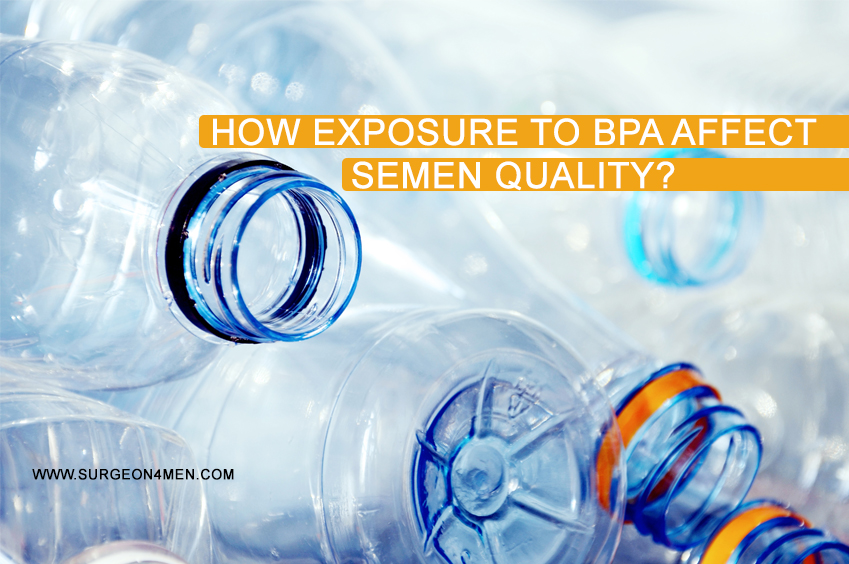How Exposure To BPA Affect Semen Quality?
Bisphenol A (BPA) is omnipresent in the environment around us, from metallic food cans, plastics to dental sealants and other similar products. Needless to say that environmental BPA seeps in the food we eat and fluids we drink; thereby aggravating the risk of BPA toxicity in the body. Researchers from University of Texas School of Public Health in Dallas examined different food products from the local grocery stores for the traces of BPA. It was observed that out of 105 samples analyzed, approximately 63 daily-use food items had detectable traces of BPA. It is imperative to mention that most canned foods have very high concentrations of BPA.
According to a new study reported in the Fertility and Sterility journal (1), chronic exposure to BPA is associated with low sperm count and poor semen quality.
BPA And Semen Quality
The very first study that was performed to explore the association between low sperm count and bisphenol A exposure in human was conducted on 130 factory employees in China. These employees had direct exposure to plastic and plastic products as part of their occupational responsibilities. To minimize the risk of bias, investigators included another group of 88 workers who were not directly involved in handling the plastics, but the exposure was similar to that of an average American (i.e. from the environment). Urine analysis showed presence of higher concentration of BPA in the employees who were directly involved in handling the plastic material. In addition,
- Low sperm count was found 2 to 4 times more frequently in the plastic handlers when compared to the control group.
- Low motility and vitality of sperms was found 2-times more frequently in the plastic handlers.
Investigators also discovered that BPA exposure is often asymptomatic and goes undetected because chronic/ severe exposure to BPA doesn’t affect the semen volume and appearance.
According to another study reported in the Reproductive Toxicology journal (2), investigators confirmed that the presence of BPA in the urine is directly related to the low quality of semen. Scientists also identified that the concentration of BPA in urine and quality of semen has a dose-response relationship; i.e. higher the exposure, worse will be the semen quality.
How Does BPA Affect Fertility?
There are several mechanisms that may explain the pathophysiology of BPA exposure and poor semen quality; such as:
- Damage to the Sperm DNA: Scientists provided the statistical evidence that detectable urinary levels of BPA are associated with a 10% higher risk of DNA damage in sperms.
- Ovulation defects: Aquatic studies indicates that very high serum levels of BPA can compromise the rhythm of ovulatory cycles in females.
BPA And Public Health Measures
In many countries (including Canada), BPA is regarded as a toxic compound and safety legislations are in place to minimize the risk of exposure to general population. Unfortunately, the analysis on the cautions and concerns of BPA exposure are still underway in the United States. Recently, a hefty $30 million are invested in a project by the National Institute of Environmental Sciences to explore the hazardous effects of BPA on the human health.
Until legislations and measures are taken at a national level, it is highly recommended to take extreme caution and care to limit the BPA exposure in order to minimize the risk of fertility issues; some helpful tips are:
- Limit the use of plastic utensils and bottles.
- Shift to reusable glass products for obvious reasons.
- Avoid exposing your plastic products to excessive heat (for e.g. microwave or intense sun-exposure).
- Pay a little more and buy products that are labeled BPA-free (especially for kids).
References
1. Li, D. K., Zhou, Z., Miao, M., He, Y., Wang, J., Ferber, J., … & Yuan, W. (2011). Urine bisphenol-A (BPA) level in relation to semen quality. Fertility and sterility, 95(2), 625-630.
2. Meeker, J. D., Ehrlich, S., Toth, T. L., Wright, D. L., Calafat, A. M., Trisini, A. T., … & Hauser, R. (2010). Semen quality and sperm DNA damage in relation to urinary bisphenol A among men from an infertility clinic. Reproductive toxicology, 30(4), 532-539.
3. Lahnsteiner, F., Berger, B., Kletzl, M., & Weismann, T. (2005). Effect of bisphenol A on maturation and quality of semen and eggs in the brown trout, Salmo trutta f. fario. Aquatic Toxicology, 75(3), 213-224.
4. Rubin, B. S. (2011). Bisphenol A: an endocrine disruptor with widespread exposure and multiple effects. The Journal of steroid biochemistry and molecular biology, 127(1), 27-34.

